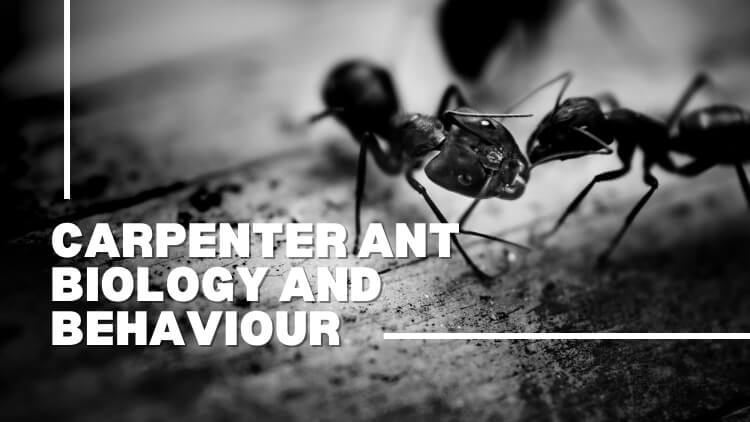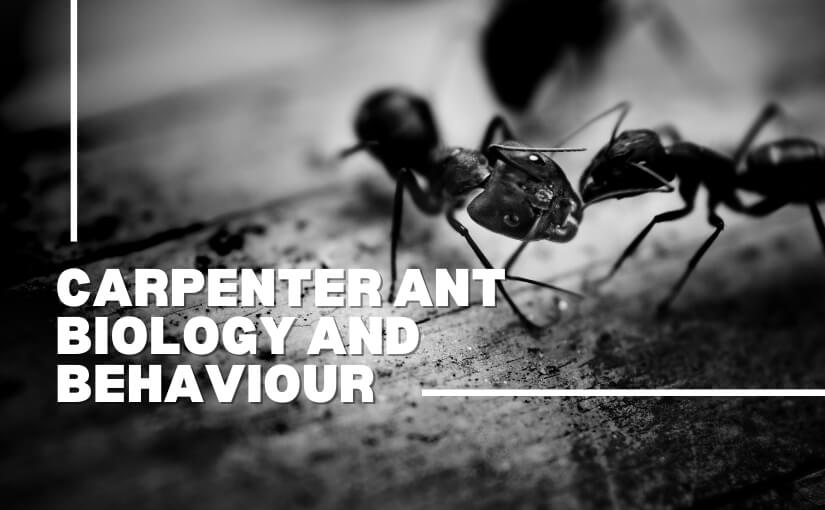
Are you constantly battling a relentless army of ants at your home? A noteworthy understanding of carpenter ant biology and behaviour can turn the tables in your favour. Let’s delve into this common yet often misunderstood pest.
Uncover the signs of an infestation, understand the dangers it poses, and gain insights into how to address the problem efficiently. Crucially, we’re going to explore the potential of expert pest control solutions for banning these destructive critters from your home.
Knowledge is power, and when it comes to pest control in Toronto, this maxim rings especially true. The more you know about what this pest eats and what a carpenter ant nest looks like, the more you can use it to your advantage against a potential invasion. Stick around as we share our expertise and help you safeguard your valued home.
What are the Different Types of Carpenter Ants?
It may be surprising to some, but not all carpenter ants are created equal. There is a vast range of species, each with its unique characteristics and behaviours. Here, we’ll go over some of the most common types you may encounter:
- Black: As the name suggests, they are entirely black, making them easy to identify. They are among the larger species and are common in many regions. What do ants eat, you might ask? Black carpenter ants are particularly fond of sweet substances, proteins, and even dead insects.
- Red and Black: Sporting a red thorax and black head and abdomen, this type is not as widespread but still common. They are omnivorous and maintain a diet similar to their black counterparts.
- Florida: These are typically either two-toned red and black or entirely dark brown or black. Incredibly adaptable, Florida carpenter ants can create nests in both moist and dry wood, unlike other species.
Of course, this is just the tip of the iceberg when it comes to the variety of species – the exact type you may encounter vastly depends on your geographical location and surroundings. Understanding the species you’re dealing with can significantly aid in dealing with an infestation and tailoring an effective control strategy.
What is the Biology and Behaviour of Carpenter Ants?
To dive deeper into our topic, let’s explore the biology and behaviour of these pests in understandable, digestible points. This pertinent information will enhance your ability to identify, prevent, and tackle infestations effectively.
Biology
There are various fascinating aspects of their biology, including:
- Body Structure: Carpenter ants are large, ranging from 1/4 to 1/2 inch in length. They have a notable heart-shaped head, a thorax with an evenly rounded upper surface, and a narrow, pointed waist.
- Colour: While primarily black, some species bear reddish or yellowish hues.
- Diet: Contrary to popular belief that they ingest wood, they do not eat wood. They feed on various food sources, both plant and animal-based. So, what do ants eat? Sugars, proteins, and fats are among their preferred meals.
- Reproduction: The queen produces new offspring, while males, called drones, exist solely to mate with the queen. After mating, the male dies.
Behaviour
Now, let’s explore some of the behavioural characteristics that distinguish these pests:
- Nesting Habits: They prefer to establish their colonies in moist wood. Have you ever wondered, ‘What does a carpenter ant nest look like’? The presence of sawdust-like material, known as frass, can be a key sign of a nearby nest.
- Communication: They communicate through chemical scents known as pheromones. Each colony has a unique scent that helps members recognize each other.
- Activity: They are most active at night, especially during warm weather. They form long trails to food sources, continuously travelling back and forth from the nest.
- Social Structure: Similar to other species, they live in large colonies with a hierarchical structure: a queen rules, with workers and soldiers maintaining the colony’s functionality.
Arming ourselves with this crucial knowledge allows us to understand better the intricate lives of these uninvited guests. In doing this, we can more effectively utilize our pest control solutions. In the next sections, we’ll explore signs of infestation, the dangers posed by such invasions, and how to effectively address them.
What are the Signs of a Carpenter Ant Infestation?Recognizing the signs of a carpenter ant infestation early on is crucial for homeowners. These insects are more than just a simple nuisance; left unattended, they can cause significant damage to your property. Here are some key indicators you need to keep an eye out for:
- Faint Rustling Noises: If you hear a faint rustling sound in your walls or wooden structures, this can be a sign. They are notoriously known for their incessant activity within their nests, creating a sound that, though subtle, is distinct.
- Discarded Wings: Seeing discarded wings or a swarm of flying ants might indicate an infestation. Carpenter ants, particularly during their mating flights, leave a noticeable sign – the wings of the now wingless females are discarded all around the colony’s entrance.
- Sawdust-Like Material: They do not feed on wood-like termites. They bore holes into it to construct their colony, resulting in a fine, sawdust-like material known as frass. Frass often accumulates near their entry points in noticeable quantities.
- Irregular-Shaped Holes: Look out for small, irregular-shaped holes on wood surfaces. These holes are the entrance to their tunnels, providing them a safe pathway to and from their nest.
Keep in mind that while these are strong indicators of an infestation, they don’t conclusively prove one. Rather, if these signs are present, they should prompt you to seek help from pest control specialists such as we are. Our expertise lies in understanding what a carpenter ant nest looks like and how to efficiently eradicate it.
What are the Dangers of a Carpenter Ant Infestation?
Understanding the possible dangers associated with an unchecked infestation is crucial to protecting your home from the havoc these pests can wreak. It’s not only about what they eat but also about their damaging nesting habits.
- Structural Damage: They burrow into wood to build their nests, weakening the strength of structures in your home.
- Costly Repairs: The damage caused by these pests can lead to expensive repairing or even reconstruction of wooden structures in your home.
- Food Contamination: They are known to scavenge and can contaminate food sources in your home.
- Negative Impact on Property Value: A severe infestation can potentially decrease the market value of your property, especially if structural damage is extensive.
While these pests may seem harmless due to their tiny size, their potential for causing significant damage and inconvenience shouldn’t be underestimated. Being aware of these risks helps underscore the importance of timely and professional pest control.
What are the Effective Solutions to Get Rid of Carpenter Ants?
Understanding the biology and behaviour of these pests is crucial for effective removal. So, once you’ve identified their presence, what practical steps can you take to solve the problem? As pest control experts at Truly Nolen Canada, we’ve crafted the following tips for you:
- Regular Inspections: Start with routine checks of your property, focusing on damp and wooden areas. Look for signs like wood shavings or traces of a gritty substance – dead giveaways of what their nest looks like.
- Eliminate Food Sources: Understanding what they eat can be a helpful clue. They thrive on dead insects, crumbs, and sugary substances. By keeping your home clean and sealing food sources, you make your property less inviting to them.
- Address Damp Areas: They love moist wood. Repair any leaks and maintain proper ventilation in your home to prevent humidity buildup.
- Baiting: Bait traps with a slow-acting poison can cause them to bring the substance back to the nest, effectively killing off the entire colony.
While these DIY methods can slow down or prevent an infestation, dealing with these pests can be tricky, especially if you’re facing an established colony. That’s when you need professional help – an integrated pest management program.
Our trained pest control experts can locate the nests, monitor behaviour, and apply control measures to effectively remove these unwelcome tenants. By eliminating the infestation and preventing future outbreaks, our team at Truly Nolen Canada can give you peace from these persistent pests.
What are the Benefits of Hiring a Pest Control Expert for Carpenter Ant Control and Prevention?
You may wonder, why hire an expert when there are plenty of DIY solutions available? So, let’s delve into the benefits of engaging a pest control specialist in dealing with carpenter ants.
- Expert Knowledge: At Truly Nolen Canada, we possess extensive knowledge about carpenter ants, their biology, habits, and signs of infestation.
- Effective Solutions: As professionals, we leverage advanced and proven methods to deal with infestations. We don’t merely address the existing problem but also adopt preventive measures to avoid future infestations.
- Safety: DIY pest control methods can pose potential safety risks if not properly executed. Our experts ensure all safety methods are employed during the treatment process.
- Save Time & Money: A timely intervention by a pest control expert can save you considerable time, effort, and money in the long run.
- Supplementary Services: Additionally, we provide supplemental education on what ants eat and can show you what their nest looks like to aid in your personal prevention strategies.
In short, securing the services of trusted pest control experts like ours is an investment in safeguarding the health and integrity of your home. To fully appreciate the benefits, schedule an inspection with us at Truly Nolen Canada. Together, we will address all your pest control needs efficiently and professionally.
Why You Should Trust Truly Nolen Canada for Your Pest Control in Toronto
Understanding this pest’s biology and behaviour is vital in identifying and controlling an infestation effectively. However, confrontation with these pests does not have to be a solo endeavour. Delegate the role of guarding your home’s tranquillity to our trusted professionals at Truly Nolen Canada in Toronto.
Handle apparent signs of an infestation—such as what a carpenter ant nest looks like—with ease by leveraging our experience and wide-ranging solutions. With us, you are not only investing in immediate carpenter ant control but prevention of future invasions as well.
The first step toward a pest-free home is education. The more you know about their habits, the better equipped you’ll be to prevent existing or potential infestations.
To learn more about our expert pest control services or to schedule an inspection and request an estimate, contact us today. Act promptly for the well-being of your home, health, and peace of mind.
